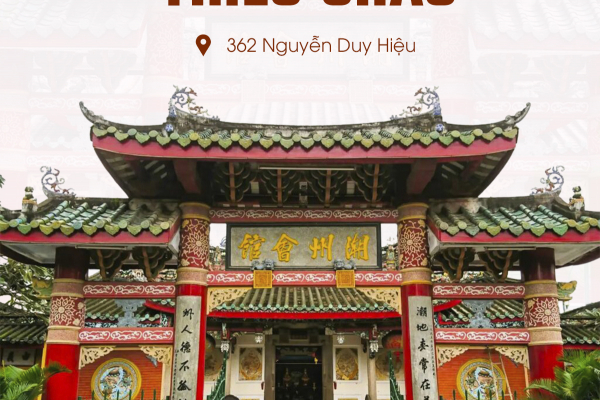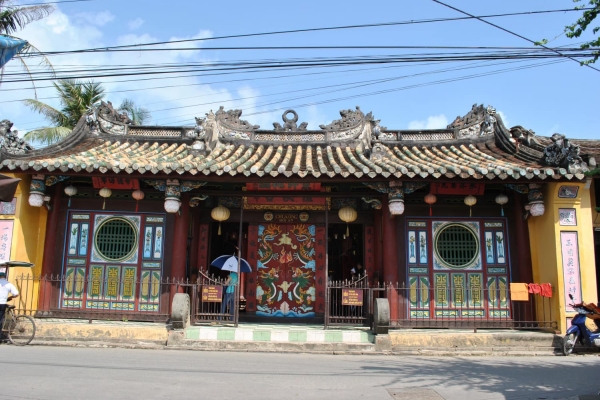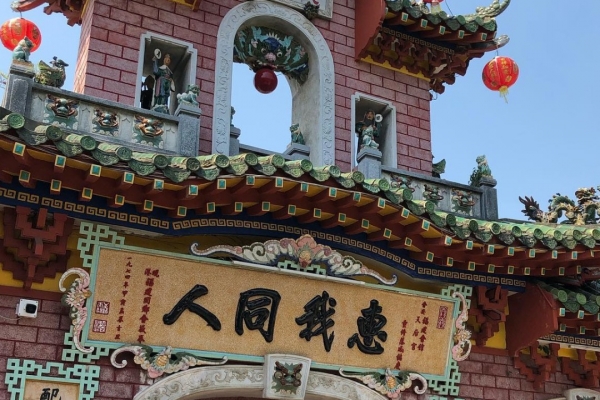Which assembly halls should I visit in Hoi An, Vietnam? What are the differences between them?
Hoi An has five assembly halls, which can confuse first-time visitors.
In this travel guide, I will share useful information about 5 Assembly Halls in Hoi An so you can plan your trip easier.
.jpg)
What is an Assembly Hall?
Assembly Hall is a meeting place where members meet, exchange, trade, and support each other in life.
The assembly hall also worships many gods according to the folk beliefs of the Chinese ethnic group and is the place of annual sacrifices of the community.
The ancient town of Hoi An was formerly an important trading port, attracting many traders from China. During this time, the Chinese built assembly halls to serve as a common spiritual place for the community.
There are five assembly halls in Hoi An, corresponding to 5 Chinese communities.
- Fujian Assembly Hall (Phuc Kien)
- Trung Hoa Assembly Hall (Duong Thuong)
- Chaozhou Assembly Hall (Trieu Chau)
- Hainan Assembly Hall (Hai Nam)
- Cantonese Assembly Hall (Quang Dong)
These Assembly Halls show the historical, cultural, spiritual, and material values of a golden age – the busiest international trading port between the 17th and 18th centuries.

5 Assembly Halls in Hoi An
Fujian Assembly Hall
Fujian Assembly Hall is Hoi An’s largest and most famous of the 5 Chinese assembly halls.
In the 17th century, when the commercial port of Hoi An flourished, many Fujian Chinese immigrated here.
They then built an assembly hall to worship Mazu (Thien Hau Thanh Mau) and used it as a meeting place for compatriots.
In 1990, Phuoc Kien Assembly Hall was recognized as a national historical and cultural relic.
Cantonese Assembly Hall
The Assembly Hall of Cantonese was built in 1885. Initially, to worship Mazu and Confucius, after 1911, it was converted to honor Quan Cong and deceased ancestors.
The assembly hall is charming with the harmonious combination of wood and stone materials, giving the building a majestic and splendid appearance. You can see beautiful ornate motifs and sophisticated carvings here.
Hainan Assembly Hall
Hainan Assembly Hall (also known as Quynh Phu Assembly Hall) was built by overseas Chinese from Hainan in 1875.
The Assembly Hall worships 108 Chinese merchants who the Nguyen Dynasty’s military officials unjustly killed. Mistakenly as a pirate ship, they fired a cannon and sank the boat.
After thoroughly investigating the matter, Tu Duc King allowed the construction of a temple to worship.
Chaozhou Assembly Hall
Chaozhou Assembly Hall was built in 1845 by the Chinese community of Chaozhou.
The place worships the Phuc Ba god, who specializes in controlling the waves and winds, helping to make travel and trade on the sea peaceful and smooth.
Trung Hoa Assembly Hall
Founded in 1741 with the contributions of five groups: Fujian, Chaozhou, Guangzhou, Hainan, and Hakka, the Trung Hoa Assembly Hall is also known as Duong Thuong Assembly Hall.
Here, people worship Mazu and Thien Ly Nhan, Thuan Phong Nhi, the Chinese geniuses.
This place is more special as it hosts meetings for all Chinese, without distinction of their region.

Ticket prices
Visitors are free to visit the two assembly halls: the Trung Hoa assembly hall (Duong Thuong) and the Hainan assembly hall.
The remaining ones (Fujian, Chaozhou, and Cantonese Assembly Hall) are charged with a ticket price of 120,000 VND / 5 locations (out of 20 fee-based attractions in Hoi An ancient town).
expatolife.com





 VietNam
VietNam













